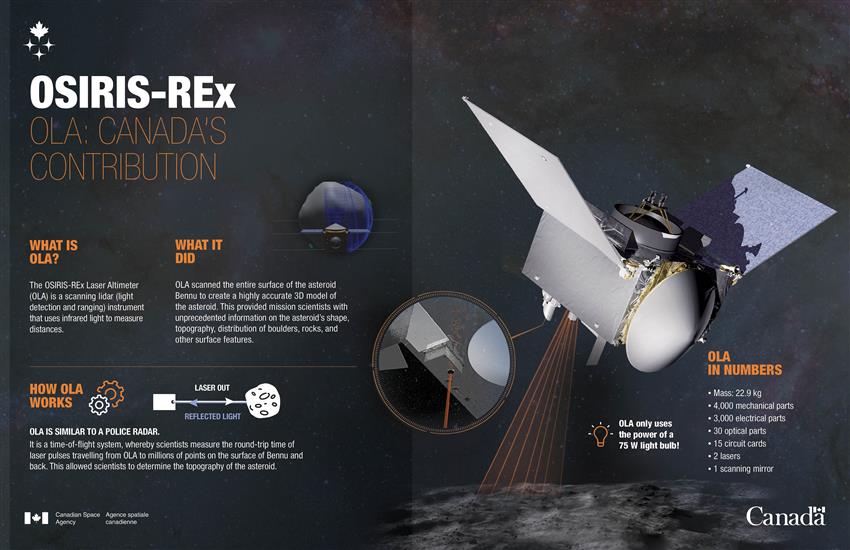OLA: Canada's contribution to the OSIRIS-REx mission - Infographic

Description
2023-08-29 - A Canadian lidar allowed OSIRIS-REx to scan asteroid Bennu's surface to create high-resolution 3D maps that were crucial to help mission scientists select the best sample site. (Credit: Canadian Space Agency)
Text version
This infographic shows an artist's rendition of the OSIRIS-REx spacecraft scanning the surface of the asteroid Bennu with a laser. It provides information on Canada's contribution to the OSIRIS-REx mission, an instrument called the OSIRIS-REx Laser Altimeter (abbreviated as OLA).
What is OLA?
The OSIRIS-REx Laser Altimeter (OLA) is a scanning lidar (light detection and ranging) instrument that uses infrared light to measure distances.
What did OLA do?
OLA scanned the entire surface of the asteroid Bennu to create a highly accurate 3D model of the asteroid. This provided mission scientists with unprecedented information on the asteroid's shape, topography, distribution of boulders, rocks and other surface features.
How OLA works
OLA is similar to a police radar. It is a time-of-flight system, whereby scientists measure the round-trip time of laser pulses travelling from OLA to millions of points on the surface of Bennu and back. This allowed scientists to determine the topography of the asteroid.
OLA in numbers
OLA's mass is 22.9 kg. It has 4,000 mechanical parts, 3,000 electrical parts, 30 optical parts, 15 circuit cards, 2 lasers and 1 scanning mirror.
OLA only uses the power of a 75 W light bulb!
File size: 1.04 MB
Image size: 5100 x 3300 pixels
Resolution: 300 dpi
Image date: August 29, 2023
Useful link(s)
Copyright / Permission to reproduce
- Date modified: